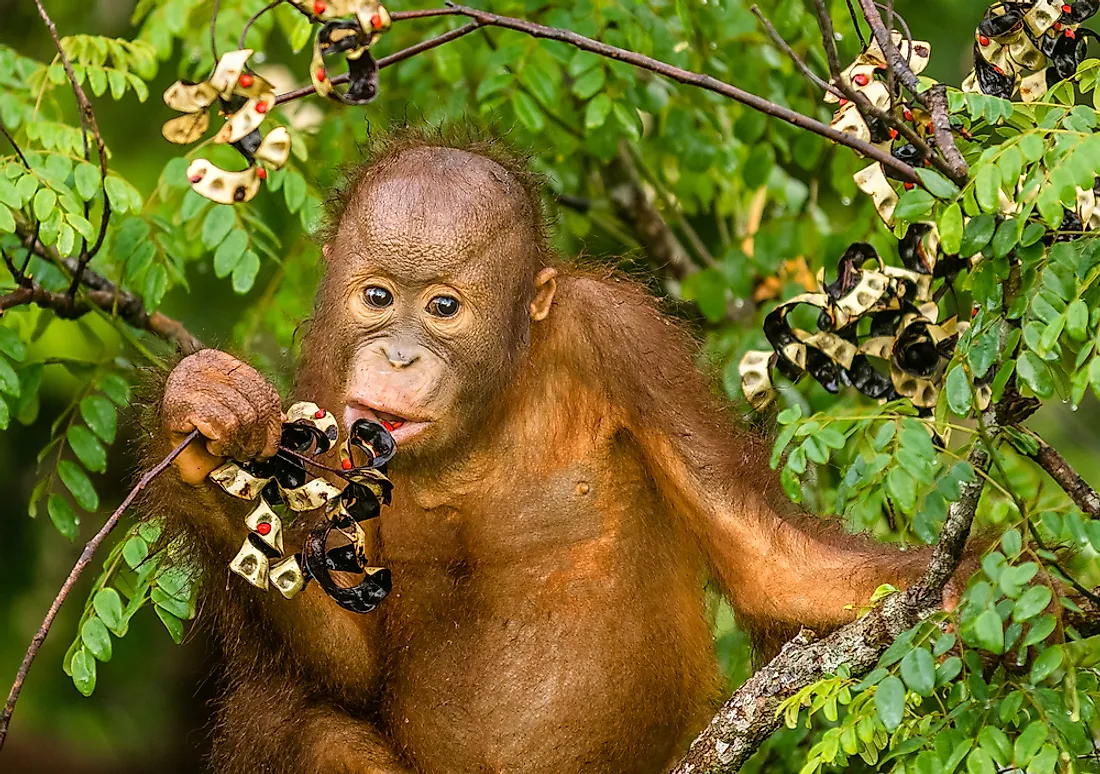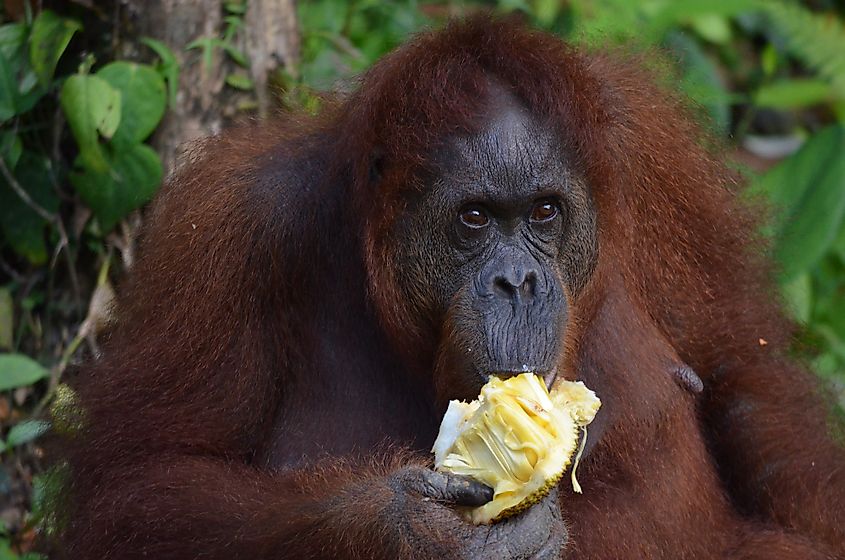What Do Orangutans Eat?

Orangutans are some of the most well-known apes mainly due to their high intelligence level and close genetic relationship with human beings. Wild populations of orangutans only exist within the rainforests of Sumatra and Borneo. Scientists classify orangutans into three species, the Sumatran orangutan, the Bornean orangutan, and the Tapanuli orangutan. Orangutans spend most of their time in the trees which significantly influences their diet.
Diet Of Orangutans

The availability and abundance of food determines the diet of orangutans in a particular evnironment. Hence, scientists classify them as opportunistic forages. Orangutans, like many mammals, learn their feeding habits when they are young by observing their mothers. Studies indicate that orangutans primarily feed on fruits which make up about 60% of their diet. Orangutans prefer eating fruits that have a fatty pulp. Some of the most common fruits that the orangutans eat are ficus fruits since they are more accessible than other fruits and are easier to digest as well. Apart from fruits, orangutans also consume other parts of plants such as young leaves and shoots, which constitute approximately 25% of their diet. Flowers and barks are also consumed. But their heavy dependence on plants for food does not mean that they are herbivores since insects, particularly termites, ants, and crickets, are also eaten by these great apes.
Ecological Importance Of Orangutan's Feeding Habits
In the wild, orangutans play a significant role in dispersing the seeds of various plant species. A study carried out by the Borneo Nature Foundation discovered that orangutans played a vital role in dispersing ficus seeds. The seeds spread by orangutans may grow into trees that may feed future generations of orangutans and other wild animals sharing its habitat.











